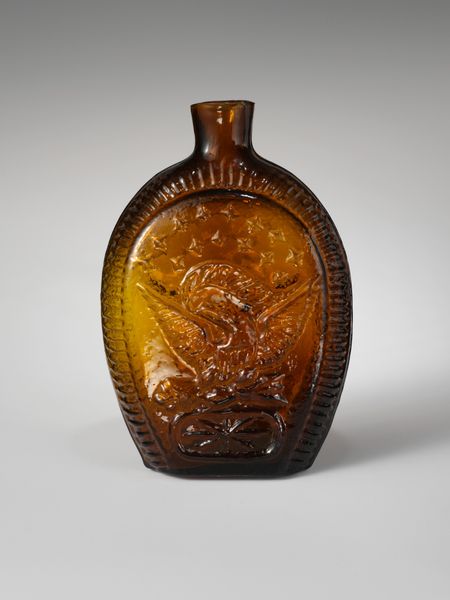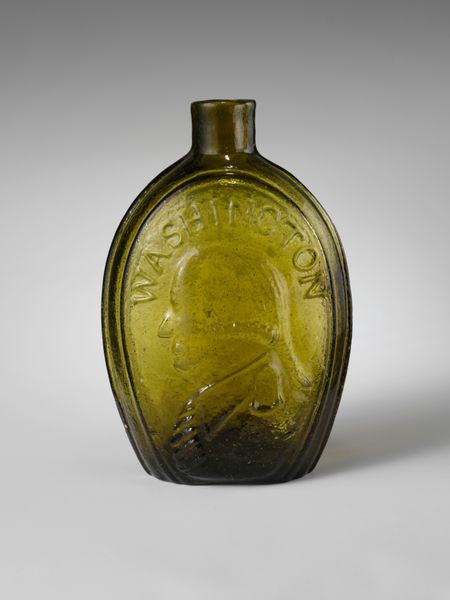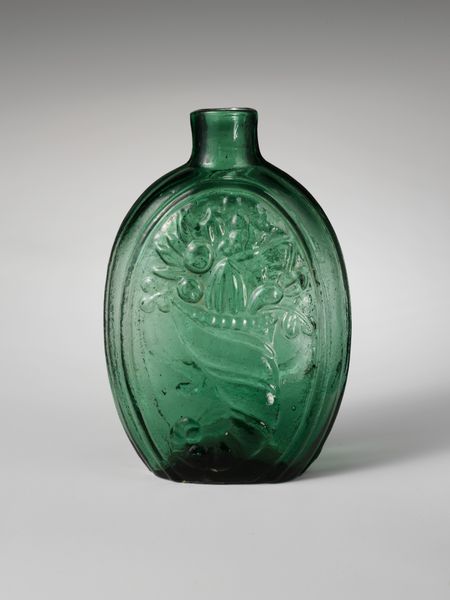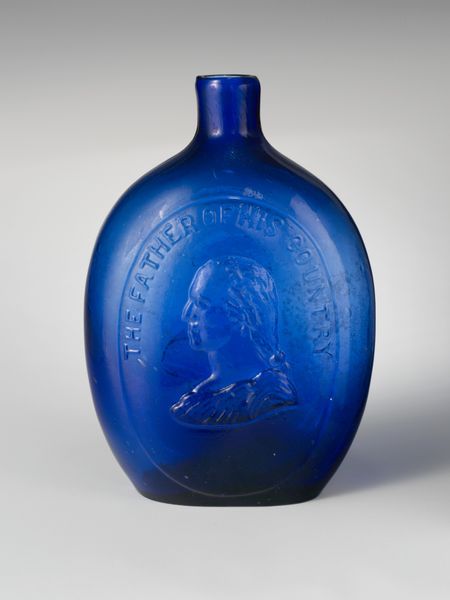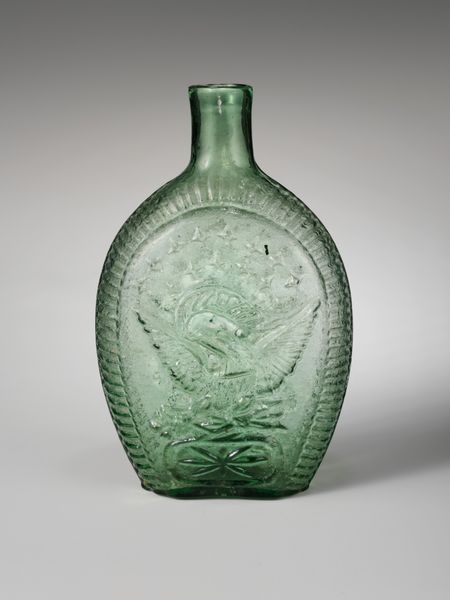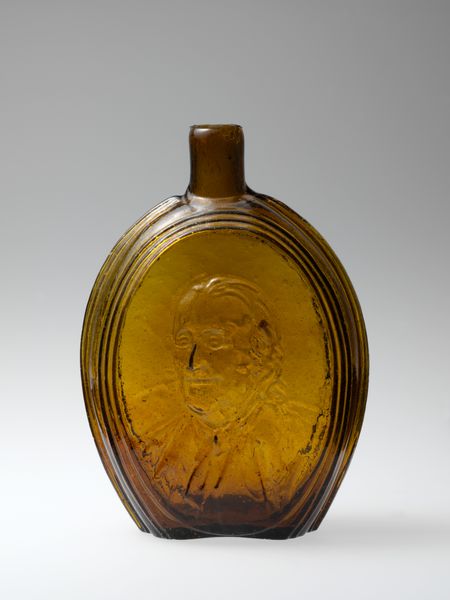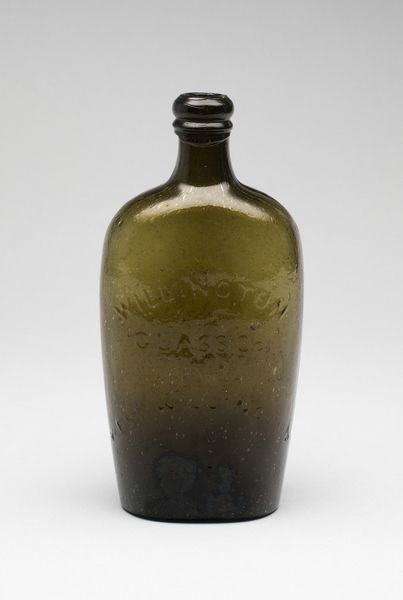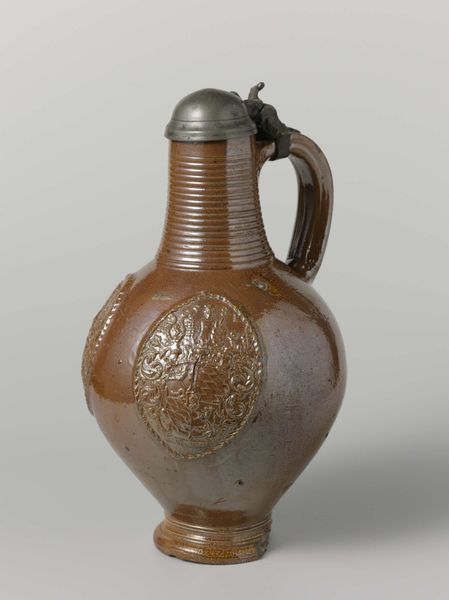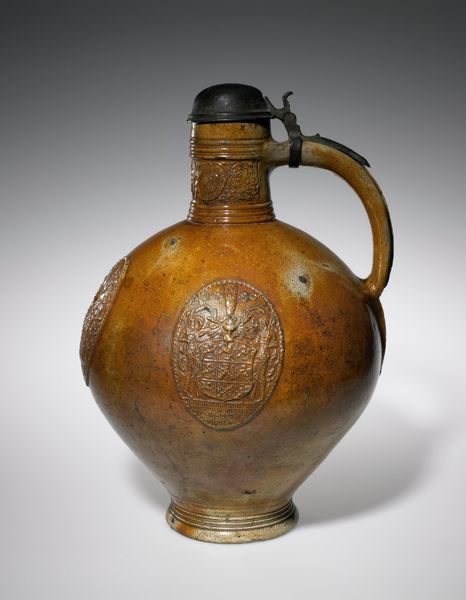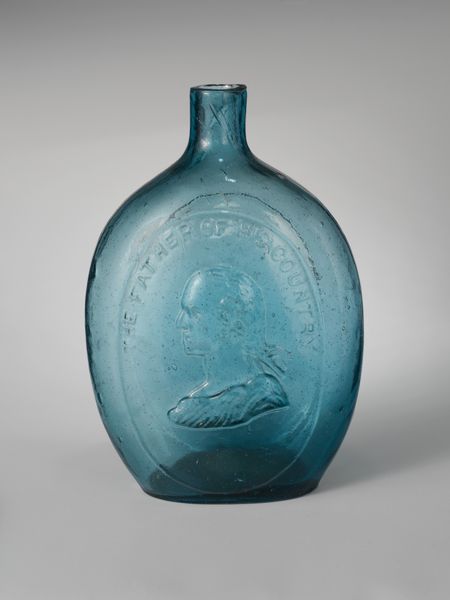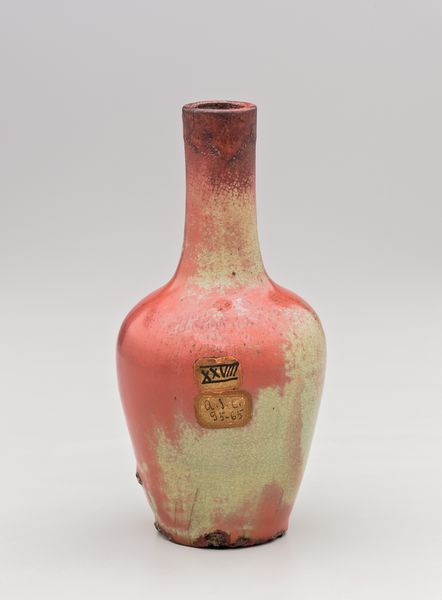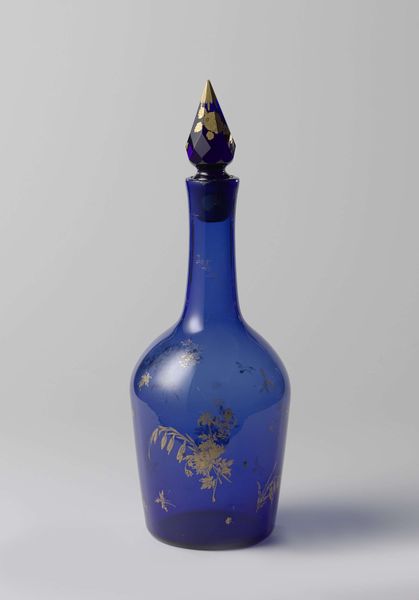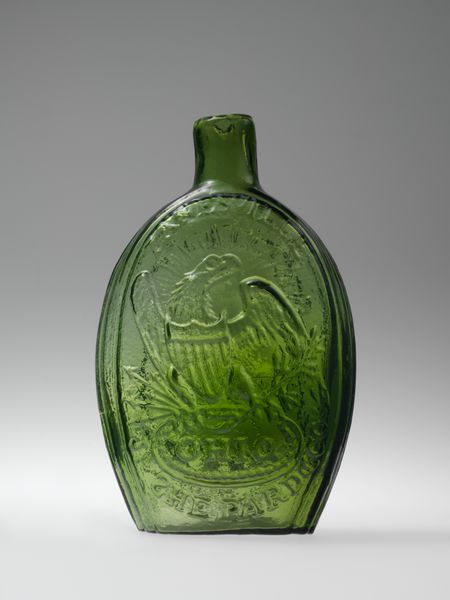
glass
#
product photograph merchandise
#
advertising product shot
#
product studio photography
#
product promotion photography
#
product photography advertising
#
product fashion photography
#
lifestyle product photography
#
glass
#
metallic object render
#
united-states
#
graphic design product photography
#
product photography
Dimensions: H. 8 5/8 in. (21.9 cm)
Copyright: Public Domain
Curator: Immediately, it strikes me as a symbol of a very particular time in American history. It makes me think of harvest and the burgeoning industrial revolution. Editor: Indeed. What you are gazing upon is a glass flask. It's believed to be crafted sometime between 1840 and 1850 by the Baltimore Glass Works. And note that it’s currently housed at the Metropolitan Museum of Art. Curator: A flask, you say? It has a utilitarian beauty, wouldn't you agree? That amber glow, like aged whiskey itself, almost begs you to reach out and hold it. But also, beyond its aesthetic appeal, I'm intrigued by what is emblazoned on its surface. Editor: Ah, yes, the imagery! Encircling the central motif, we find the phrase “Corn for the World.” It’s not just a boast; it reflects a profound sense of American identity intertwined with agricultural abundance. It speaks to cultural narratives. Curator: Absolutely! The ear of corn becomes a potent emblem of American prosperity. It speaks of abundance but, in a symbolic sense, also implies a sense of self-reliance, deeply connected with national ideology. It’s as if this humble flask becomes a vessel carrying both drink and national pride. How ingenious is that? Editor: Well put! And think of the context. This piece emerges during a period of intense growth and expansion in the United States. Glassware production was becoming more industrialized. The “Corn for the World” phrase isn't just about farming; it's advertising a certain vision of the nation. Curator: Right! Because we know that visual language in advertising goes beyond just trying to sell a product: these types of bottles or flasks would enter into people's households, subconsciously associating particular ideals of success with a particular image. It has an eerie modern feel. Editor: I suppose the echoes of that vision can still be felt. But this conversation makes me grateful to stand here together, sifting through those many layers of symbol, history, and, of course, a little aesthetic beauty. Curator: And for me, I appreciate a material artifact—like this one—for carrying so much about its culture embedded into it. You can decode what that symbol has meant and can still mean in time. Editor: Agreed. This flask whispers stories about who we were and offers subtle insights into who we continue to be.
Comments
No comments
Be the first to comment and join the conversation on the ultimate creative platform.
